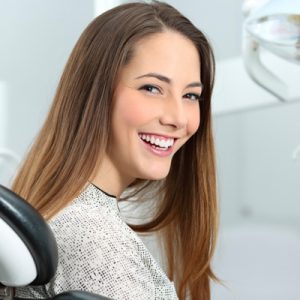Orthodontics
At Bay House Dental Practice we offer orthodontics, or teeth straightening, for both children/teenagers and adults.
Children’s orthodontics
Are you concerned that your child has crooked teeth and that it could be affecting their confidence?Are you struggling to find a solution or support for your child’s crooked teeth through the NHS?
We have experienced first-hand how the NHS are more reluctant to cover what they see as cosmetic treatment and as such there are very limited places for children that need orthodontic braces. On top of that, if you are lucky enough to be selected for teenage orthodontic treatment you are likely to wait an average of 24 months before your first appointment.
We can help, we offer a variety of orthodontic solutions and can make your child’s treatment affordable.
Adult orthodontics
Have you always wanted a straighter smile or to close a gap between your teeth? Correct your misaligned teeth, either because you missed out on having treatment as a child, or your teeth have moved back in adulthood? Orthodontics now offers revolutionary new ways to align your teeth and give you that perfect smile to help you smile and laugh with confidence!
Types of Brace
Fixed Braces
Fixed braces consist of brackets and bands bonded or cemented to your teeth and very thin metal wires that gently push your teeth into their right positions. The wire is tied into the brackets with a steel ligature or a coloured plastic ring. Some brackets have clips to hold the wires and no ties are needed. Ordinary fixed braces are bonded to the front of your teeth.Brackets can be made of metal or tooth-coloured ceramic or plastic.
Tooth-coloured fixed braces
Tooth-coloured braces have fixed brackets that are made of tooth-coloured ceramic or plastic instead of metal. They are therefore much less noticeable.
Invisalign Clear Aligner braces
Invisalign is a virtually invisible way to straighten teeth and improve your smile. Instead of using braces, Invisalign uses clear plastic aligners to move your teeth into position. This makes it an ideal treatment option for patients who are self-conscious about wearing braces and having orthodontic treatment. Click here for more information on Invisalign.
Lingual Braces
There are also braces that can be bonded on the back of your teeth (lingual braces), making them virtually invisible.
Functional Removable braces
Bands are cemented and brackets are bonded to the front of your teeth.
Steps in Fixed Brace Treatment
1st visit – X-rays, photos and impressions for plaster study models of your teeth are taken. Your orthodontist will plan your treatment using these records. Sometimes permanent teeth are removed when they are crowded and there is not enough space for all of them.
2nd visit – Your orthodontist will explain the treatment plan and the braces suitable for your condition. Before braces are fitted, separators (small plastic ‘doughnuts’) are placed between your molars for a week to create spaces for the molar bands.
3rd and 4th visits – Bands are cemented and brackets are bonded to the front of your teeth.
Subsequent visits – every 4 to 8 weeks. Adjustments are made to the braces by way of wire-changes, adding springs, elastics or other accessories.
When treatment is completed – your fixed braces will be removed at a de-banding appointment, followed by removal of cement and the polishing of your teeth. Moulds of your teeth in their new positions are taken to make retainers.
Retainers – after your braces are removed, you will need to wear retainers to hold your teeth in their new positions for the next few years.
Braces FAQs
The normal period of treatment with fixed braces is two to three years. You will need to make time every 4 – 8 weeks to visit your orthodontist regularly if you wish your treatment to finish well and on time.
Speech: With regular fixed braces, speech is normally not affected at all. However, if your condition requires a palatal expander appliance to be fitted at the roof of your mouth, this may interfere with your speech. If you have lingual braces, you will take some time to learn to speak properly with the braces.
Playing musical instruments: If you play a musical instrument with a mouthpiece, it will take you one to two weeks before you become as skilful as before.
With braces on, your teeth are more difficult to clean. Do not leave food on your braces. Brushing your teeth properly after every snack and meal will reduce the risk of decay and gum disease. In addition, five minutes of brushing is needed every morning and night. Have your toothbrush available to brush after meals as well as at your orthodontic visits. You can use disclosing solution to check if your teeth are clean. You will need to replace your toothbrush more often as it will wear out faster.
Eating hard food or biting on large pieces of food may dislodge the brackets or bands and damage the wires. Avoid eating nuts and biting on nails or pencils. Do cut hard fruits into small and thin pieces before eating them. Avoid food and drinks with high sugar content such as sweets and soft drinks.
If you are interested in more information about teeth straightening, please contact the surgery on 029 2023 1258.



